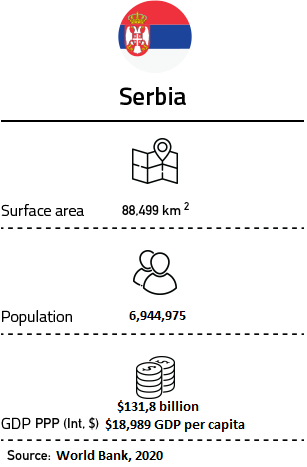As a signatory of the Energy Community Treaty, Serbia is committed to meet the savings target of 9% or around 752 ktoe, by 2018. Serbia calculated both an annual 1% renovation target for central government buildings and a 0,7% target under the energy efficiency obligation scheme. While the first target was officially adopted in August 2018, adoption and notification of the Article 7 target is still pending.
Source: Third NEEAP & Energy Community, 2019


 Contact
Contact